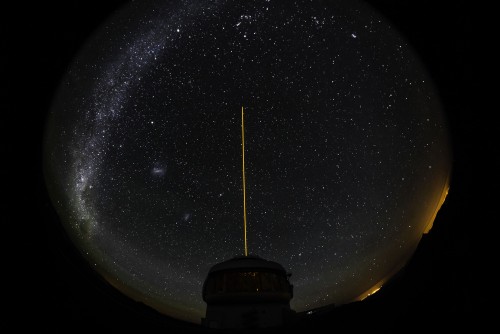- Date: 6 Mar 2015
- Comments: (0)
- Categories: For Astronomers, Operations News
Attention Users: GeMS is Back On-sky!
(Terminology in italics)
Sodium laser: the laser’s sodium light excites sodium atoms high in the Earth’s atmosphere to produce an artificial guide star used to make adjustments to refine/sharpen the image.
Queue scheduling: Gemini staff (or visiting astronomers) make observations for the Principal Investigators (PIs) who (generally) aren’t present at the observatory when the data is obtained.
Classical run: when the PI, or team members are present at the telescope during observations.
Seeing: astronomers call “seeing” the level of blurring on images due to turbulence in the Earth’s atmosphere.
The Gemini Multi-Conjugate Adaptive Optics System (GeMS) is on the sky and scheduled to collect data until March 15th at Gemini South. High humidity has plagued the summit lately, and on Wednesday, March 4th, conditions improved allowing the observing run to begin.
The night crew reported excellent conditions and the amount of light returned by the sodium laser (see photo) was good for the season. As a result of the good conditions, the team decided to work on targets in the queue schedule.
In preparation for this run, the team had little spare time over the past week as they performed calibrations, and other checks.
A classical run begins on Friday, March 6th, so Gemini observers have their fingers crossed that the good seeing continues!






